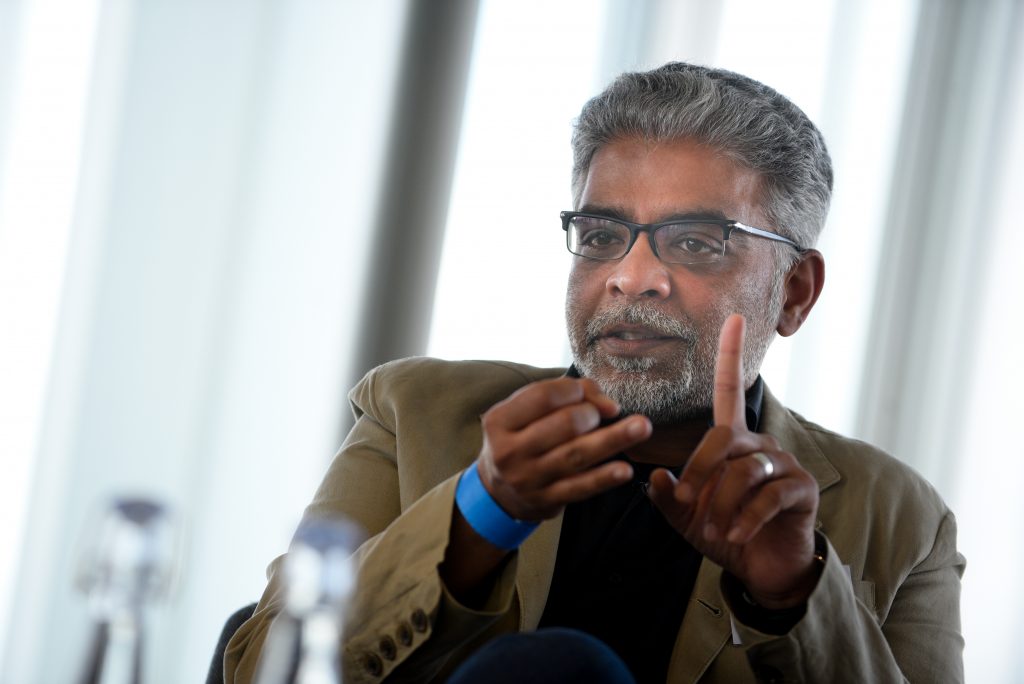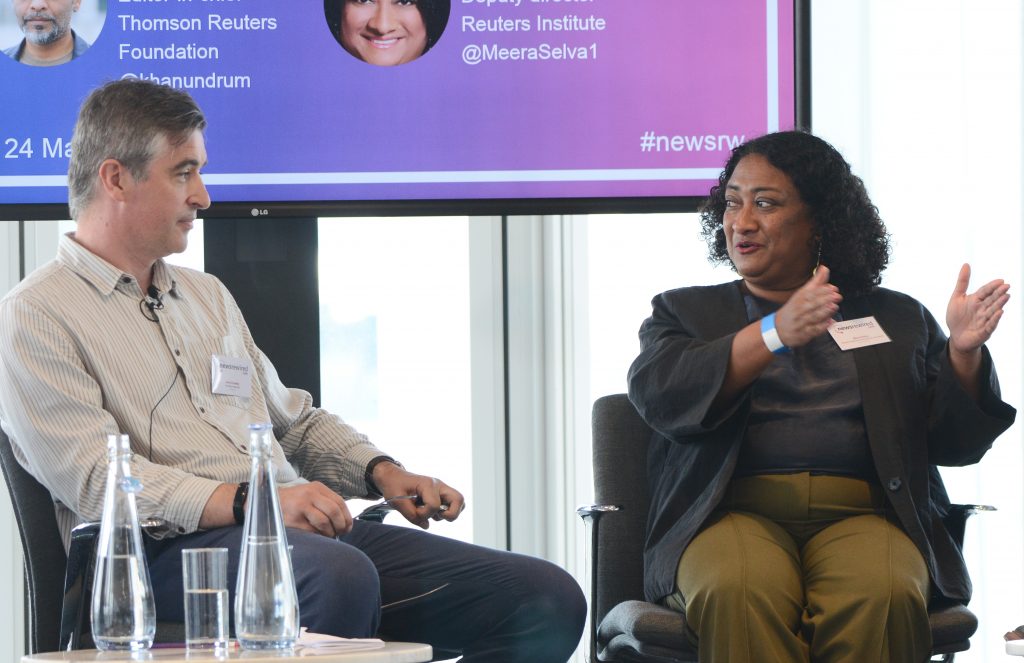By Camille Dupont
We can blame the pandemic for making it worse, but journalism burnout is not a new phenomenon. Newsrewired has been covering the issue extensively whether it was in December 2020, highlighting initiatives to improve mental health in the newsroom or its place in the future of the newsroom last year.
To go further, experts from Sky News, the Thomson Reuters Foundation, the Reuters Institute for the Study of Journalism and the Headlines Network look at how we can look after our most valuable asset: journalists. To do that, we must create an industry that is more empathetic towards its workers, and rebuilds trust between management and reporters. In other words, individual resilience hinges very much on collective
Resilience: why newsroom should care
“Resilience is the ability to withstand shocks, the ability to survive, to adapt usefully when crises hit but also when the world changes,” says Meera Selva at the Newsrewired conference today (24 May 2022). She continues: “Resilience is about how to deal with short term crises and changes, and also long term ones.”
We have of course had no shortage of shocks over the past two years, from a global pandemic to job insecurity, to the often distressing stories journalists have had to cover.
Selva is deputy director of the Reuters Institute, where she is the director of its Journalism Fellowship Programme, and is the incoming CEO of Internews Europe. She cites a study she led with Dr. Anthony Feinstein, Professor of Psychiatry at the University of Toronto and a neuropsychiatrist, on journalists’ working conditions and emotional state in June 2020.
Around 70 per cent of the respondents were found to suffer from some levels of psychological distress. They also found that 11 percent of respondents report prominent symptoms of post-traumatic stress disorder.
According to Cristina Nicolotti Squires, director of content at Sky News, the nature of journalism has also changed: “In the old days, we used to go to the stories. You put your flak jacket on, you put your helmet on.
“Now, a lot more people are exposed to more difficult images and they haven’t got that flap jacket and that helmet on,” she explains.
“It takes a village”
Conversations and getting people to talk about how they are feeling has been one of the many challenges faced by journalists during a time of remote working. Yasir Khan, editor-in-chief of the Thomson Reuters Foundation, recalls “cold calling people” and making sure “everyone was ok”, rather than making Zoom appointments for informal conversations.
“It takes a village to make a resilient journalist,” he explains. From human resources to the c-suite and senior management team, all panellists agree changes must come at an organisational level.

While a change of culture around mental health is certainly underway, John Crowley, co-founder of the Headlines Network, does not believe enough newsrooms and leaders are doing enough, especially for young people. “Young people don’t have the support they were given at university,” he tells the panel. Crowley also points out that the newsrooms have “many plates to spin and need help”. Mental health is frequently dropped as a priority.
The Headlines Network was founded upon this observation and has been offering workshops and resources from entry-level journalists to senior management. They noticed a clear will to help, but “no skillset”. Mental health first aid or trauma support training are an essential of the resilience toolbox and more common now, according to Nicolotti Squires.
The aforementioned 2020 Reuters study co-led by Selva is clear on this. While the respondents said that their organisations had been moderately supportive, the journalists who had not received mental health support or counselling fared the worst.
Support can also come in the form of a network, whether internal to the organisation or external with peers. According to Selva, the most important thing is “to not feel like you’re alone” and to “open spaces for journalists to talk”. Unfortunately, mental health is historically a taboo subject in journalism.

And a network does not necessarily have to be face-to-face, as Crowley explains. One good that came out of the pandemic was to remove formalities around work colleagues, as everyone has seen each other’s living rooms whilst working from home.
Safeguarding our most precious resource
The pandemic has essentially reminded us that “we are only as strong as our weakest links,” says Yasir Khan. Newsroom leaderships need to address building time capacity for resilience and role model their own strategies.
According to Crowley, it is in their interest to perfect this: journalists are their “most precious resource”. Looking into the cost of staff turnover could motivate upper management to change policies, because there is a clear consequence for ignoring the issue.
“You can have the most resilient journalist in the world but if you work in an environment that doesn’t lend itself to good work, then that counts for nothing,” he says.
Splashing out for staff lunches or retreats is a worthwhile expense to relieve staff of stress or tension, particular that which has built up through isolating throughout the pandemic period. “It’s worth every penny,” according to Khan.
But ultimately, as Selva explains, three factors determine how resilient your newsroom is: how well you embrace new ideas, the morale of your team, and having the diversity of staff to communicate stressors not previously considered.
The last point is perhaps the one the media is struggling the most with. Until we bring diversity into the newsrooms, true resilience will remain unattainable.


